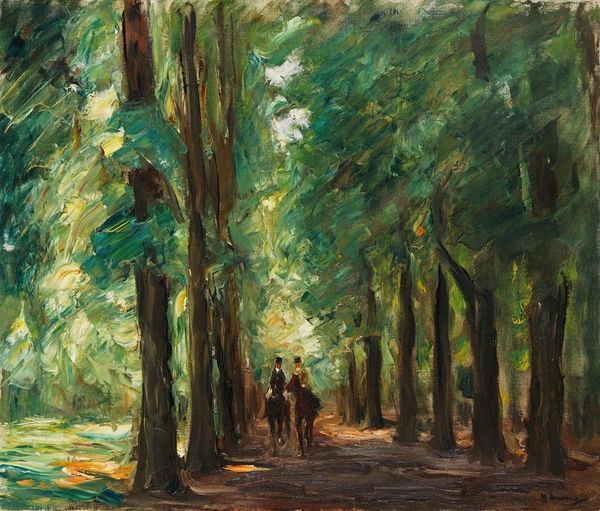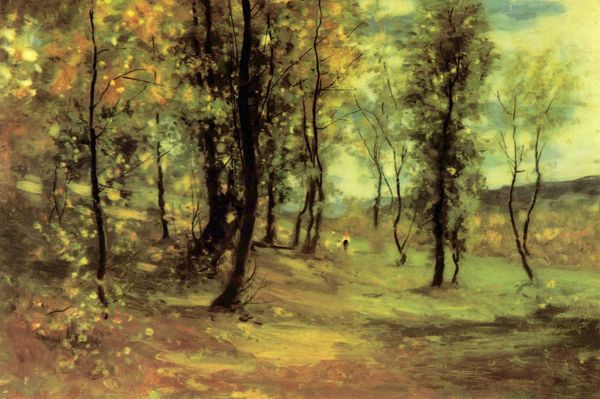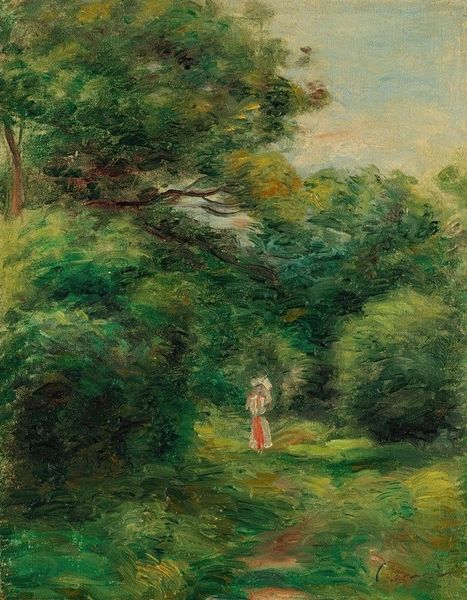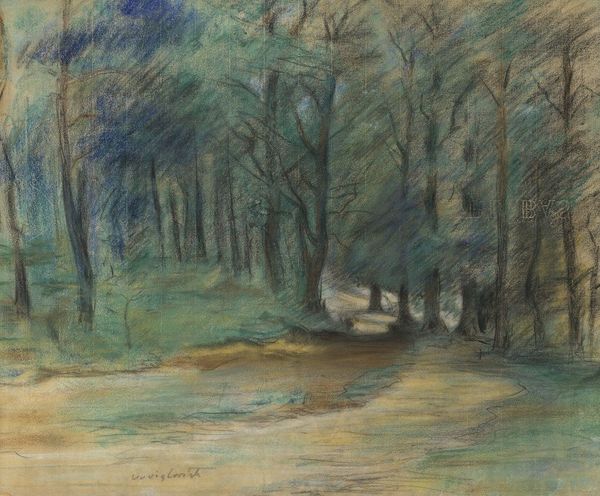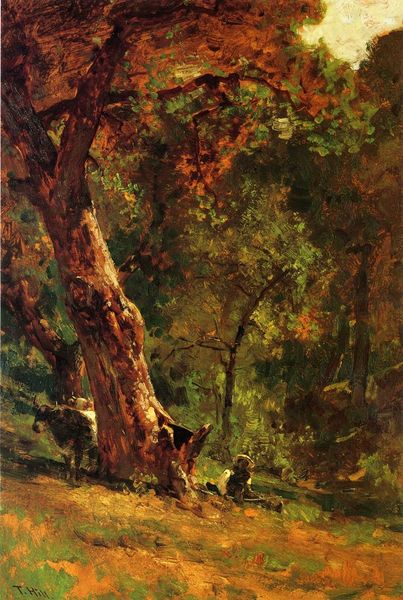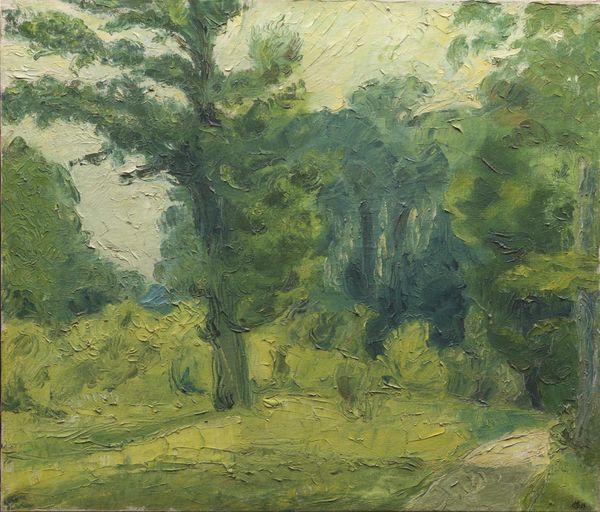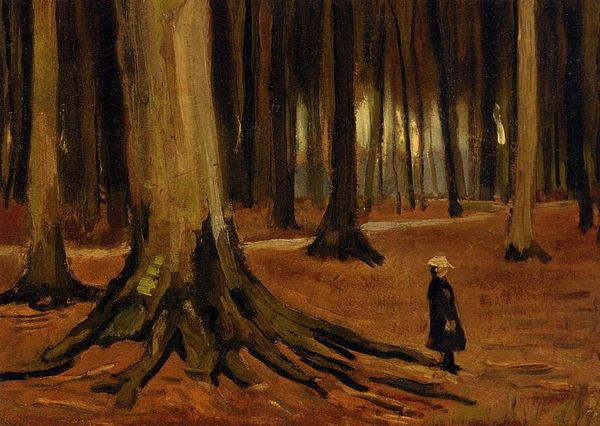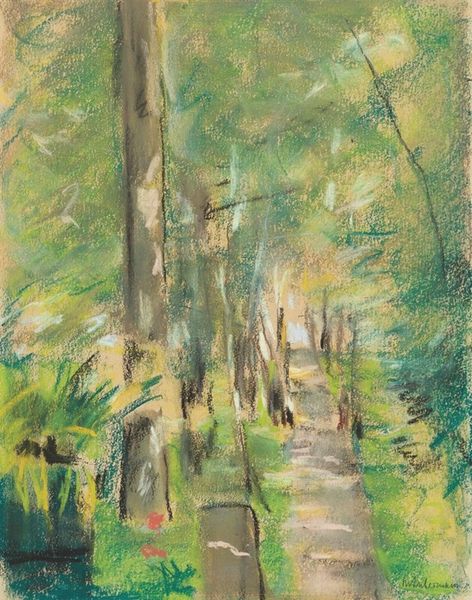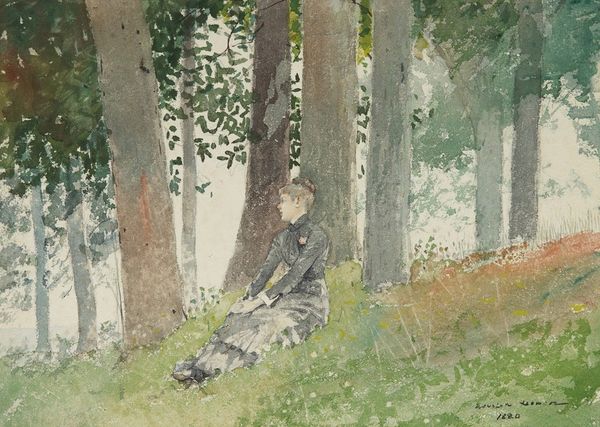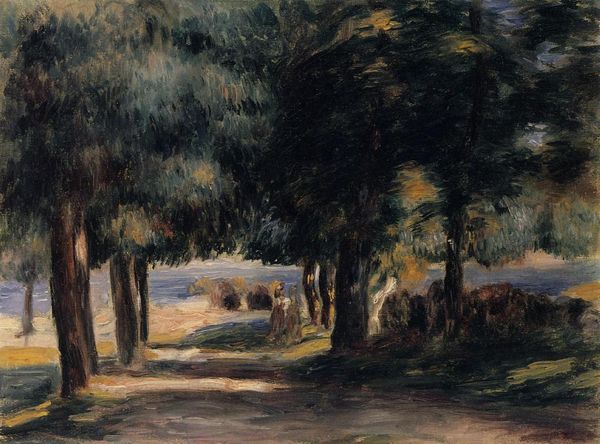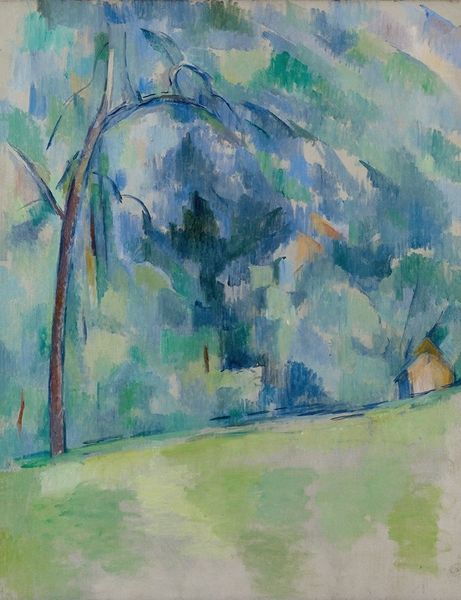
A Walk in the Woods (Madame Lecoeur and Her Children) 1870
0:00
0:00
pierreaugusterenoir
Private Collection
Copyright: Public domain
Curator: Ah, this piece transports me right back to my childhood summers! So impressionistic in feeling and painterly. Editor: Indeed. "A Walk in the Woods (Madame Lecoeur and Her Children)," painted around 1870 by Pierre-Auguste Renoir. It feels more like a captured moment than a formal portrait, don't you think? A breezy, almost casual slice of life rendered in oil paint. Curator: Precisely! Look at how he renders light filtering through the trees, a bit like secrets being whispered through the branches. I can practically smell the earth. And those children… like little woodland sprites. What sort of symbols did Renoir draw on to craft that sort of sentiment, I wonder. Editor: Consider the setting. Woods, in folklore, often symbolize the unconscious, a space of hidden desires and transformation. The path is significant; an archetypal motif referencing destiny or progress into the unknown. Then the mother as guide--Hecate, perhaps Demeter. Do you notice how these tropes subtly elevate the work into something deeper? It moves past the immediacy you noted earlier. Curator: Ooh, Hecate. I love that. Although it feels as though those impressions are created primarily through tonality more so than directly quoting a pre-existing set of symbols or myths. It makes me consider how tonality creates different meanings in color for different audiences! Editor: Absolutely! The limited palette - varying shades of green, punctuated by whites and blacks, creates this serene, contemplative atmosphere. Colors themselves become symbols here. Green becomes renewal, but also maybe a hidden realm that evokes a primal longing. Curator: Primal longing…that’s it! It makes you want to step right into the scene. It feels so real but distant. That’s such a classic Renoir touch – his ability to capture that fleeting, ephemeral beauty that seems both there and not there at the same time. Editor: I think Renoir recognized that images are rarely neutral. By tapping into those deeper, universal symbols--even in an unassuming domestic scene--he layered his work with emotional power that resonates across time and culture. What seems 'of the moment' is really ageless in his pieces. Curator: What a perfect paradox! His magic lies in how beautifully he embodies timeless and fleeting motifs within his technique. Editor: A sentiment well-placed as we observe Madame Lecoeur, eternally walking in the woods.
Comments
No comments
Be the first to comment and join the conversation on the ultimate creative platform.
